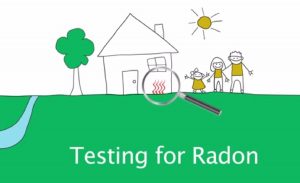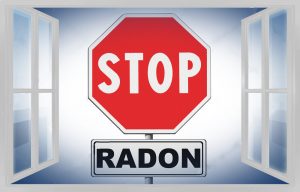EPA recommends homes start mitigation if the radon level is 4 pCi/L (picocuries per liter). If the soil and rocks under your home start emitting radon gas, then your home can be in danger. This is a naturally occuring radioactive gas, so there is no way to stop it. But there are various methods to keep it outside your home.
After radon detection, homeowners must start installing a radon mitigation system. It is always advisable to get professional help. They get special training to handle this radioactive gas. They can reduce exposure much quickly and fix the issue. But if you desire to follow a DIY process without a mitigation system, we have a few suggestions. Read this article to find out more.
Are radon mitigation systems expensive?
According to U.S. News, a radon mitigation system costs between $778 and $1,223. But bigger houses can cost up to $3,000. Yes, these systems can be a little expensive. But would you rather keep exposing your family to radioactive gases? If not, then you must make this healthy investment. This is a one time cost and the radon mitigation fans come with a 5-year warranty.
If you maintain the system properly it can last for more than two decades. Even if it is a little expensive, it is a one-time investment for your home and family. A licensed professional service will never charge you extra. So, ensure your service provider has all the certificates and experience to do the task. Do not make a redundant purchase from unlicensed providers just to get a cheaper rate.
5 DIY tips to reduce radon levels
Radon levels in a house vary due to different reasons. They depend on the ventilation system of the house. They also differ from season to season. Hence, you need to get a long-term radon test done to see the whole picture. After detection, if you are wary about a mitigation system, you can follow some of these DIY tips.
- Ventilation is key
Radon is a gas that is part of the air in your house. Though it slips in from the soil below the house, it finally mixes with the air. So, ventilation is key to reducing radon levels in your house. You can air out your home as much as possible. Open up all windows and doors whenever possible. Do not trap the air inside; let cross-ventilation take its own course. Maximize the natural airflow inside the house. If there is scope, install a new window or two to ensure better ventilation.
- Seal all cracks and holes
All old houses have cracks and holes in their floors. Any cracks on the foundation and basement can be dangerous. Radon gas can easily creep into the house through these cracks. You need to use a proper sealer to seal off these places. This will give your house better protection against gas. These sealers may be hard to find, but they are quite effective in reducing radon levels.
- Prevent house depressurization
More radon gas enters the house when the pressure is lower inside the home. So, avoid using exhaust fans and combustion units like wood stoves and fireplaces. These tend to reduce the natural air pressure inside the house. This creates favorable conditions for radon to enter the home. If you must use an exhaust fan or fireplace, open the windows. This will help the airflow and improve the pressure balance.
- Caulking
Use caulking products to seal off the smallest of entry points in your house. For caulking recommendations, you can visit your local stores. But these can be expensive.
- Clear natural underfloor ventilation
Many homes in the USA and Canada have suspended ground floors. This means that such homes have underfloor vents for air passage and ventilation. Extreme weather conditions can block them over the years. Make sure you clear and unclog them for better underfloor ventilation. But, some of these are intentionally blocked to prevent drafts. If this is causing confusion, talk to a professional.
When should you hire a professional?
So, is a DIY radon reduction enough? Experts believe that it is not enough. Yes, these DIY tips can help improve the conditions, but they can not solve the problem completely. Hire a professional radon mitigation service provider to get the best results.




